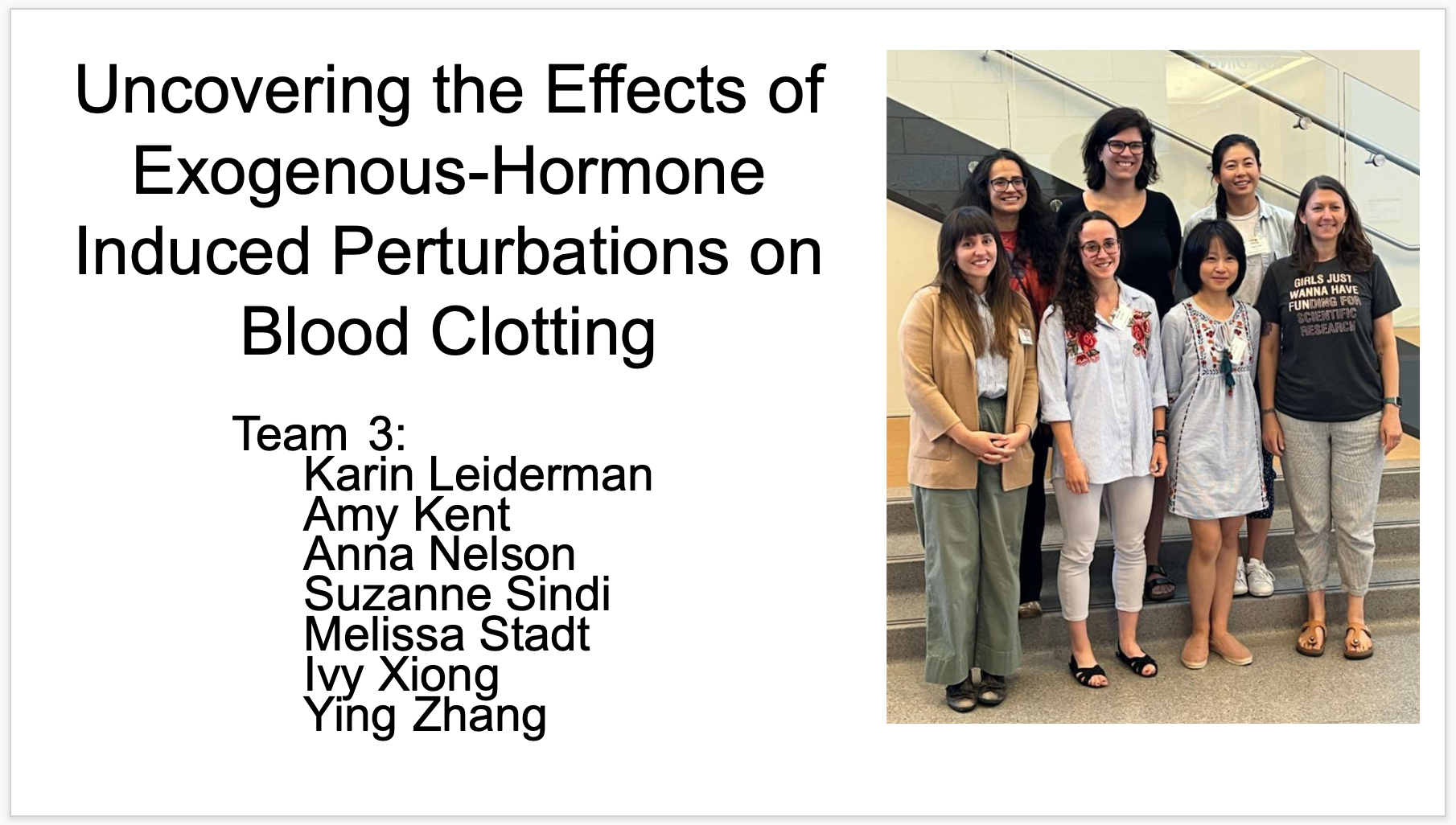WIMB2022 for Women's Health

It was my great pleasure to be part of the Collaborative Workshop for Women in Mathematical Biology, held at Optum campus (United Health Group) in Minneapolis/Eden Prairie, Minnesota (Jun 20-24, 2022).
This week-long project-oriented workshop was organized by the Institute for Mathematics and its Applications (IMA) at the University of Minnesota, and spearheaded by Ashlee Ford Versypt (University of Buffalo (SUNY)), Rebecca Segal (Virginia Commonwealth University), Blerta Shtylla (Pfizer), and Suzanne Sindi (University of California, Merced). A general description of the workshop is available online at WIMB2022.
I found it extremely encouraging to be in the same room with so many leading mathematical biologists, all of whom are female this time. In particular, I saw it a precious opportunity to work on problems towards women’s health, a topic that is of significant urgency today: two teams devoted the week to study the impact of oral contraceptives on menstrual cycle and blood clotting!
I enjoyed my time throughout the week working alongside Karin Leiderman (Colorado School of Mines/University of North Carolina, Chapel Hill), Anna Nelson (Duke University) and Suzanne Sindi (University of California, Merced), investigating the “Effects of exogenous-hormone induced perturbations on blood clotting”, teamed up with Melissa Stadt (University of Waterloo), Ying Zhang (Brandeis University), and Amy Kent (University of Oxford). We aimed at combining mechanistic modelling with statisitcal methods to incorporate oral contraceptives into the existing ordinary differential equation (ODE) framework of coagulation under flow. By the end of the week, we achieved both research objectives and provided initial evidence for the hypothesis that selected coagulation factors sensitize thrombin response and oral contraceptives modulate these factors to increase risk for thrombosis in women.
Studying towards women’s health is by no means a novel quest, but it is surprising how little we know about women’s health. A fast-moving research direction is accounting for sex differences in biomedical sciences, especially that NIH mandated considering sex as a biological variable in study design, first in Jan 2016. I’m lucky to be in a team examining sex differences in mammalian kidney development, and I’m actively developing a theoretical framework for a molecule-to-physiology understanding of sex differences in susceptibility to kidney diseases. I’m also aware of excellent collaboration among women scientists studying the evolutionary basis of female adaptation to high blood pressure across the tree of life. It feels like the momentum is building up, to understand women’s health better, together.